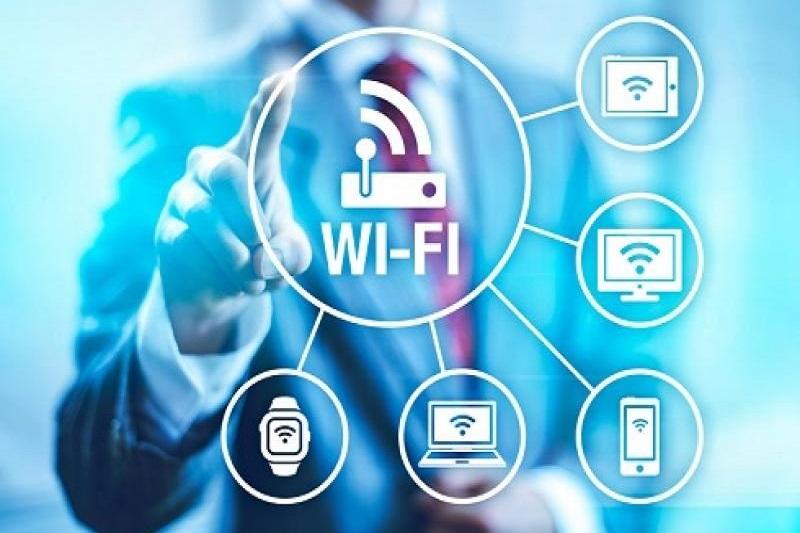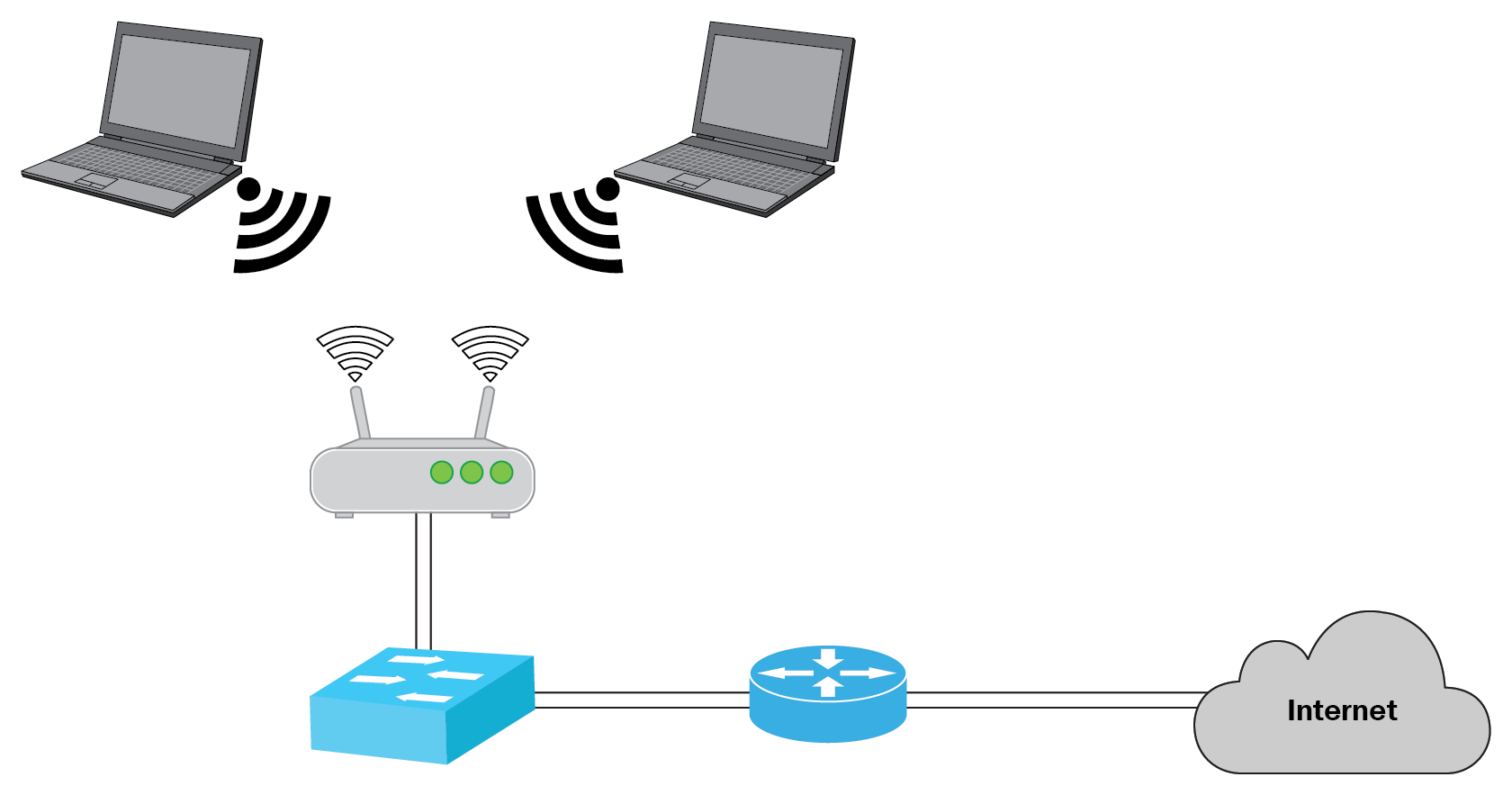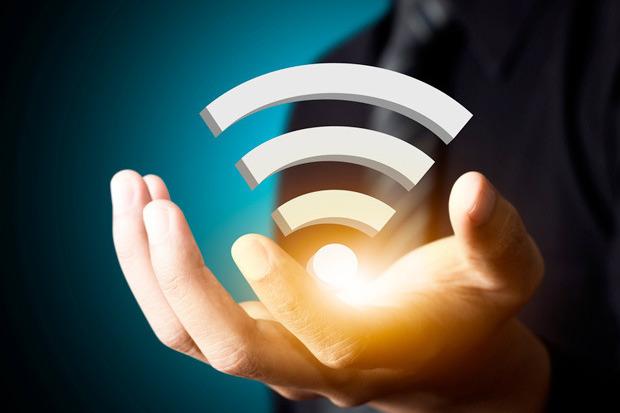How to Protect Corporate Wireless Networks: Best Practices
Hackers Steal The Credentials And Permissions Of An Organization’s Users In Various Ways. However, Some Methods Are More Popular With Hackers.
In all cases, hackers aim to gain the highest privilege to access sensitive organizational resources, turn off security mechanisms, extract data, delete backups, and install malware or ransomware.
Professional hackers don’t expect to get a domain administrator’s account through a phishing email, so they start with more specific targets and work their way up to the primary target based on a step-by-step plan.
Known methods in this field include phishing, pervasive search, social engineering (a person pretending to be a trusted IT service provider and requesting to create a user account), SQL injection, etc.
IT infrastructures are constantly exposed to cyber-attacks, which are carried out for various reasons. For example, a cyber attack on a production unit turns off industrial devices and production lines.
In contrast, an attack on companies active in the financial and insurance fields steals user information. An important thing to be aware of is that hackers attack infrastructure through Internet-connected LANs and sometimes through wireless networks.
An organization infiltrates the infrastructure and causes irreparable damage.
Today, most government agencies and private companies use wireless networks to connect clients to the network. Accordingly, it is necessary to be familiar with the attacks and mechanisms of dealing with cyber attacks on organizational and home wireless networks.
In today’s world, users have at least one phone that can connect to the Internet. As the number of smart devices increases, implementing a security strategy to minimize cyber attacks is essential, mainly because the Internet of Things is used in some manufacturing units and even smart homes.
Devices connected to the wireless Internet, such as smartphones, may be used by hackers to collect personal information, steal identities, steal financial data, or attack bank accounts, eavesdrop on users’ activities, or watch their movements.
Accordingly, it is essential to know enough about the dangers of wireless networks and take measures to minimize the scope of malicious threats.
What risks do wireless networks face?
A home or business network is equally vulnerable to cyber threats. In the first case, hackers may infiltrate a home wireless network and install malware on client devices to use the user’s home network to attack other targets in the future.
In the second case, hackers penetrate the organizational wireless network to steal or damage corporate information. In general, wireless networks face the following threats.
Piggybacking
If you don’t secure your wireless network, anyone with a laptop within range of your access point can use your network. Typically, good access points and even enterprise-class routers can cover a distance of up to 30 meters, but if you use outdoor access points with a high coverage factor, this range can extend up to 304 meters.
So, if you live in an apartment or your workplace is in a commercial complex, not securing your wireless network or implementing an open wireless network allows users to connect easily to your network, perform illegal activities, record your web traffic, or steal personal files.
Wardriving
Wardriving is another piggybacking attack. As we mentioned, a wireless access point can extend a wide range. If you place it at a height and there is no physical obstacle in its way, the signals can be received from a much greater distance from where you live or work.
Professional hackers are well aware of this and try to find unsafe wireless networks by roaming around commercial or residential complexes using their laptops, which are sometimes connected to powerful antennas. This practice is known as wardriving.
Evil Twin attacks
In an evil twin attack, hackers gather information about a corporate or public network and implement their own network by impersonating it. In this case, hackers use a stronger broadcast signal than the original access point signal so that users’ devices receive this signal. Next, users unknowingly connect to a network that sends a stronger signal.
Since the victim connects to the Internet through the attacker’s system, the attacker can easily use special tools to read the information the victim sends.
This data may include credit card numbers, username and password combinations, and personal information. For this reason, it is recommended to always verify the authenticity of a public hotspot before connecting to it. In this case, you will be sure to connect to a reliable access point.
Wireless Sniffing
Statistics show that most public access points users connect to are not secure, and the traffic these networks transmit is not encrypted. This puts sensitive communications or transactions at risk since joining a site means sharing information; hackers can use eavesdropping tools to obtain sensitive information such as passwords or credit card numbers. For this reason, you should ensure that all access points you connect to use at least WPA2 encryption.
Unauthorized Computer Access
An unsecured public wireless network combined with an unsecured file-sharing mechanism can allow hackers to access any directory or file being shared, intentionally or unintentionally. Ensure you turn off the file and folder-sharing mechanism when you connect your devices to public networks.
Enable the sharing mechanism only on trusted home or corporate networks, and enable the above feature only when sharing is necessary. Disable file sharing if it is not required. The above approach prevents hackers from accessing files stored on computers and mobile devices.
Shoulder Surfing
In public places, hackers can easily observe the buttons you touch or press while typing usernames and passwords and steal sensitive information. To solve this problem, some companies and organizations use screen protectors that limit people’s viewing angles. These protectors can be purchased at a small price. For smaller devices, like cell phones, it’s best to ensure someone isn’t looking at the phone screen when entering sensitive information.
Theft of Mobile Devices
Hackers don’t have to spend their time only hacking wireless networks to gain access to user data. Sometimes, they try to gain unlimited access to all the data stored on the device through physical theft or use it to access the user account information (username and password).
Protecting devices in situations where they are lost or stolen is necessary. Most mobile devices, such as laptops, can fully encrypt user information. In this case, hackers cannot enter the computer and steal its data without having a password or personal identification number (PIN).
In addition, it is recommended to encrypt the data on the device before sending it to the cloud and set a password for the programs that will access the sensitive information. Finally, files containing personal or sensitive information should be encrypted separately or password-protected.
What should we do to minimize the risks around wireless networks?
To protect wireless networks from hackers, you must follow some security principles to make it harder for hackers to break into a home or corporate wireless network. Among the essential principles that you should pay attention to are the following:
Change default passwords
Most networked devices, such as wireless access points, are accessible to users with default passwords. These default passwords are publicly available online and are, therefore, not a robust security mechanism. Changing default passwords makes it harder for attackers to gain access to devices. Periodically changing and choosing complex passwords is the most critical solution to protect networked devices.
Restrict access
Allow only authorized users to access the network. Every hardware device connected to a network has a Media Access Control (MAC) address. By filtering the MAC addresses that can access the network, you can allow only a limited number of devices to connect to the network. Typically, hackers need to connect to a network to break into it and crack the password, but if they can’t do that, they won’t be able to carry out further malicious operations.
The above feature allows you to maintain your privacy and provide an initial credential to users who intend to connect to the corporate network but are not company employees. In addition, you can use the “guest” account, which is one of the most used features of wireless routers. In this case, users will access a separate wireless channel with a different password.
Encrypt data on your network
Encrypting wireless data prevents hackers who have managed to break into the wireless network from eavesdropping through techniques such as man-in-the-middle. Various encryption protocols protect data, with WPA2 and WPA3 being the most powerful algorithms.
Currently, WPA3 is the most robust encryption algorithm. In a situation where WPA2 and WPA are available options for data encryption, but if the router supports WPA3, it is better to use the above algorithm because security experts have identified vulnerabilities in the WPA and WPA2 protocols.
Use the SSID feature.
One solution that security experts use to deal with hackers is not to publicly release the SSID of the Service Set Identifier. Wi-Fi routers and access points allow users to hide their devices’ SSIDs, which makes it more difficult for attackers to find the network. Additionally, it is recommended that the SSID be changed to a unique name. If you use the default names chosen by the manufacturer, hackers can identify the type of router and use vulnerabilities detected in the firmware to penetrate the network.
Install a firewall
Typically, most routers come with a pre-configured and installed firewall capable of blocking malicious traffic. However, installing firewalls, such as host-based ones, will increase the security of the enterprise network. Hackers who can get past security mechanisms may get past ordinary firewalls, but a host-based firewall provides an extra layer of protection to protect data.
Keep your antivirus software up to date.
Antivirus software works best with the latest virus and malware signatures. Most antivirus programs also have additional features to deal with spyware and adware.
Sharing files should be done based on specific arrangements.
First, you should pay attention to file sharing between devices, which should be disabled if not needed. When enabling the sharing feature in operating systems such as Windows, you must specify whether you intend to share the file on a public or private network. Also, creating a dedicated folder for sharing files and restricting access to folders on a drive is recommended.
Any file or document to be shared should be password-protected. Finally, the most important thing to remember is never to select the entire hard drive for file sharing.
Keep your access point firmware up to date.
Wireless access point manufacturers periodically release updates and patches for their product firmware. For this reason, you should regularly check the manufacturer’s website to receive and install any updates or patches released for your device.
Connect to the organization’s primary network using a virtual private network.
Most companies and organizations use a Virtual Private Network (VPN). VPNs allow employees to connect to the corporate network while working remotely securely.
The private network encrypts communication from the very beginning, so any information sent from the user’s computer to or received from the corporate network is encrypted from the start.
FAQ
What encryption protocol should corporate Wi-Fi use?
Use WPA3-Enterprise with 802.1X authentication for the strongest security.
How do I prevent rogue or “evil twin” Wi-Fi access points?
Deploy a Wireless Intrusion Detection / Prevention System (WIDS/WIPS) to continuously monitor for and block unauthorized APs.
Should guest Wi-Fi be on the same network as corporate devices?
No — set up a separate SSID for guests to isolate traffic from your internal corporate network.


